Part Analysis
| General Data | |
| Manufacturer (OEM) | Andyson |
| PCB Type | Double-Sided |
| Primary Side | |
| Transient Filter | 4x Y caps, 2x X caps, 2x CM chokes, 1x MOV |
| Inrush Protection | NTC Thermistor SCK205R0 (5 ohm) & Relay |
| Bridge Rectifier(s) |
2x GBU1506 (600V, 15A @ 100°C)
|
| APFC MOSFETs |
2x Way-on WML53N60C4 (600V, 26A @ 100°C, Rds(on): 0.07Ohm)
|
| APFC Boost Diode |
Global Power Technology G4S06508AT (650V, 8A @ 153°C)
|
| Bulk Cap(s) |
2x Nippon Chemi-Con (420V, 470uF each or 940uF combined, 2000h @ 105°C, KMQ)
|
| Main Switchers |
4x Way-On WML26N60F2 (650V, 10.5A @ 100°C, Rds(on): 0.21Ohm)
|
| APFC Controller |
Champion CM6500UNX
|
| Resonant Controller |
Champion CU6901VPA
|
| Topology |
Primary side: APFC, Full-Bridge & LLC Resonant converter
Secondary side: [12V] Synchronous Rectification & [Minor Rails] DC-DC converters |
| Secondary Side | |
| +12V MOSFETs | 8x Ping Wei PWC012N04ES (40V, 132A @ 100°C, Rds(on): 1.2mOhm) |
| 5V & 3.3V | DC-DC Converters: 6 x Way-On WMB050N03LG4 (30V, 41A @ 100°C, Rds(on): 5.4mOhm) PWM Controller(s): ANPEC APW7159C |
| Filtering Capacitors | Electrolytic: 7x Rubycon (4-10,000h @105°C, YXS) 3x Rubycon (6-10,000h @105°C, ZLH) 2x Rubycon (4-10,000h @105°C, YXJ) Nippon Chemi-Con (10,000h @105°C, LE) Teapo (3,000h @105°C, SC) Polymer: 30x Polycap, 1x FPCAP |
| Supervisor IC | Weltrend WT7527 (OCP, OTP, OVP, UVP, SCP, PG) |
| Fan Controller / Micro Controller | Weltrend WT51F104 |
| Fan Model | Hong Hua HA13525H12F-Z (135mm, 12V, 0.50, Fluid Dynamic Bearing Fan) |
| 5VSB | |
| Rectifier |
PJ335M
|
| Standby PWM Controller |
Excelliance MOS EMB8569C
|
Andyson provides the platform, utilizing a contemporary design with a full-bridge topology on the primary side, along with an LLC resonant converter for reduced energy losses. On the secondary side, eight Ping Wei FETs regulate the 12V rail, which feeds a pair of DC-DC converters that generate the minor rails. The parts used are of good quality, especially the passive ones; however, this is not the case for the soldering quality, which is terrible, most likely because I received a pre-production sample. That said, the Sharkoon Rebel P20, which uses the same platform, also has mediocre soldering quality, with several messy soldering jobs on the PCB’s backside, and a mediocre PCB finish. Most likely, the not-good-looking soldering jobs won’t notably affect performance and reliability as long as they are not cold joints; it is more of an aesthetic issue for us, picky reviewers.
Here is a comparison between the Sharkoon Rebel’s P20 PCB and the YT1000’s PCB. As you can see, besides the different PCB colors, there are differences in the soldering and coating quality, with the P20 having a clear advantage. Because some of the YT1000’s parts are not recognizable, I will use some photos of the Rebel P20, where the marking can be distinguished.
The transient filtering stage contains all the necessary components to block both incoming and outgoing EMI emissions. Typically, it starts at the AC receptacle and continues on the main PCB.
There is an MOV to protect from voltage surges and an NTC thermistor with a resistance of 5 ohms. Moreover, a bypass relay supports the NTC thermistor.
The two GBU1506 parallel bridge rectifiers can handle up to 50A together.
The APFC converter uses two Way-on WML53N60C4 FETs and one Global Power Technology G4S06508AT boost diode. Nippon Chemi-Con manufactures the bulk capacitors. Their combined capacity is 940 μF, and both are rated for 2,000 hours at 105 °C. The voltage rating is 420V, which is higher than the APFC’s DC bus voltage (approximately 380-400V DC).
The APFC controller is a Champion CM6500UNX.
Four Way-On WML26N60F2 primary switching FETs are installed in a full-bridge topology, and an LLC resonant converter is utilized for enhanced efficiency.
The LLC resonant controller is a Champion CU6901VPA.
The PSU’s main transformer. One of its main functions is to isolate the primary and secondary sides electrically.
Eight Ping Wei PWC012N04ES FETs regulate the 12V rail.
Two DC-DC converters generate the minor rails. They use six Way-On WMB050N03LG4 FETs. The PWM controller is an Anpec APW7159C.
Chemi-Con, Rubycon, and Teapo provide the electrolytic capacitors. FPCAP and Polycap make the polymer capacitors.
You can find more information about capacitor performance and other specs below:
The standby PWM controller is an Excelliance MOS EMB8569C.
Several polymer caps at the face of the modular panel form an extra ripple-filtering layer.
The soldering quality is not good, and the same applies to the PCB’s coating.
The cooling fan is a Hong Hua HA13525H12F-Z, utilizing a fluid dynamic bearing.
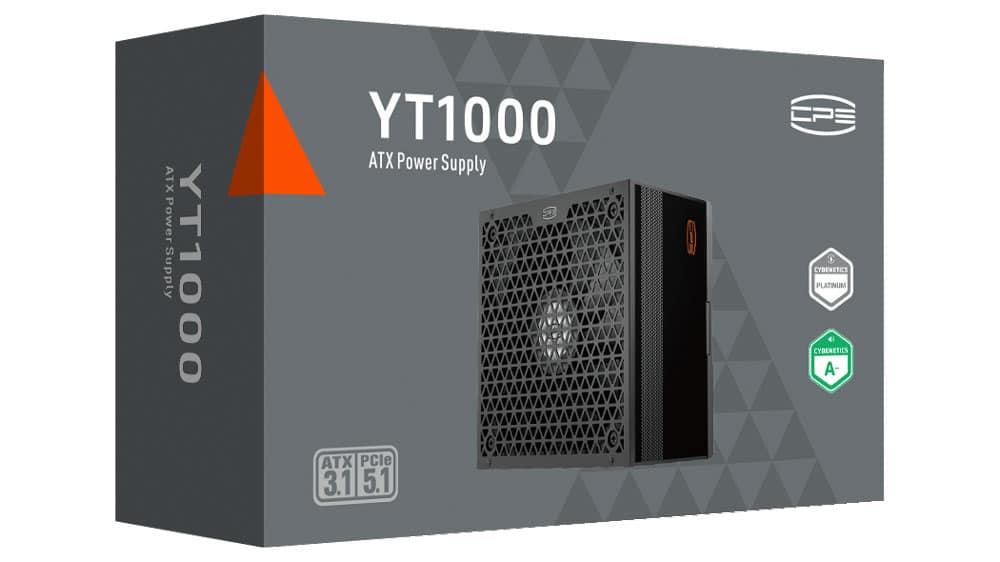
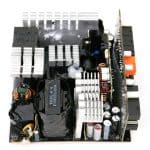
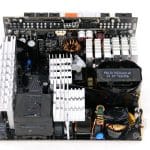
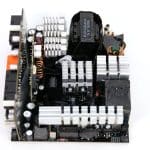
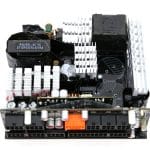
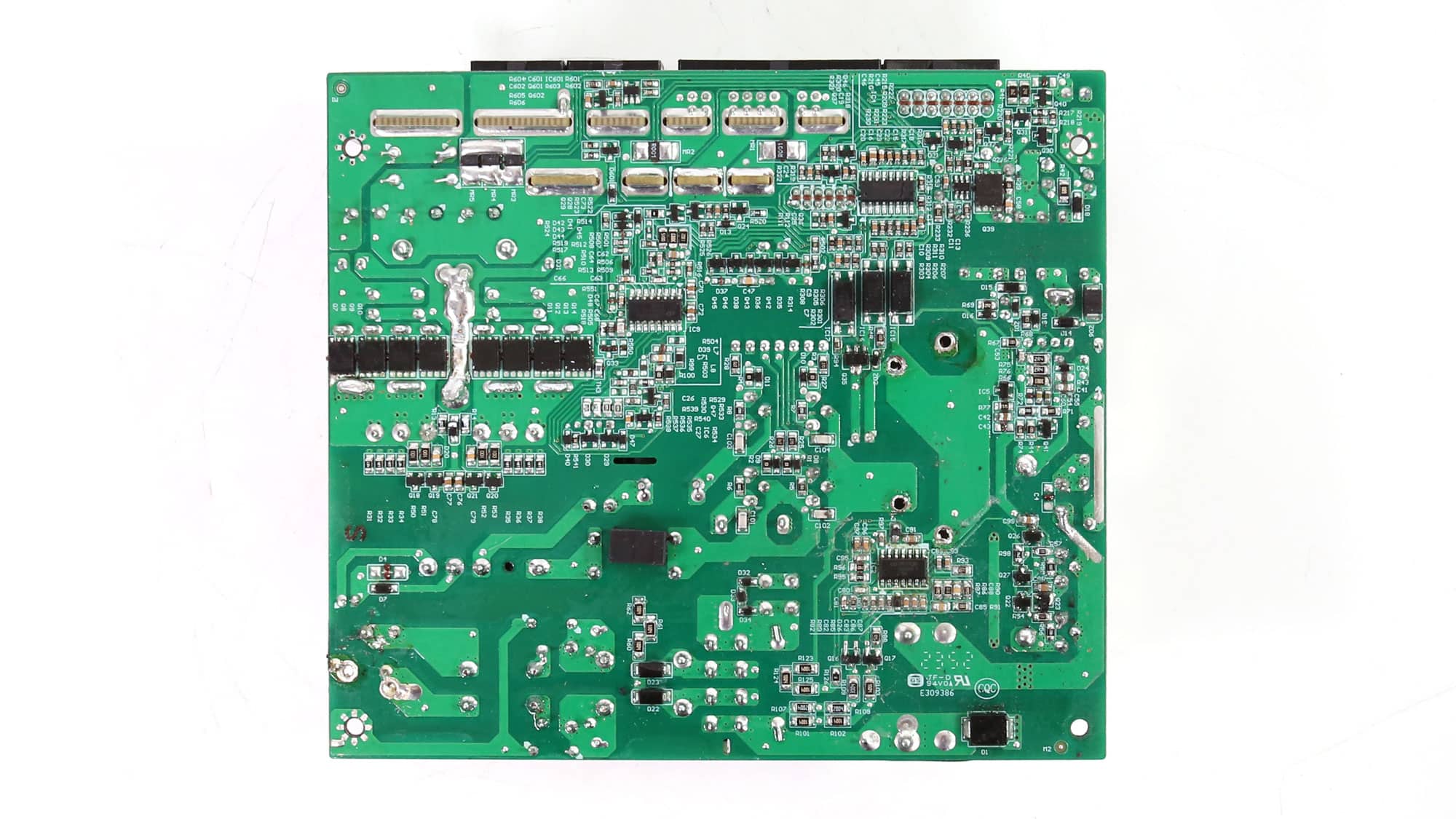
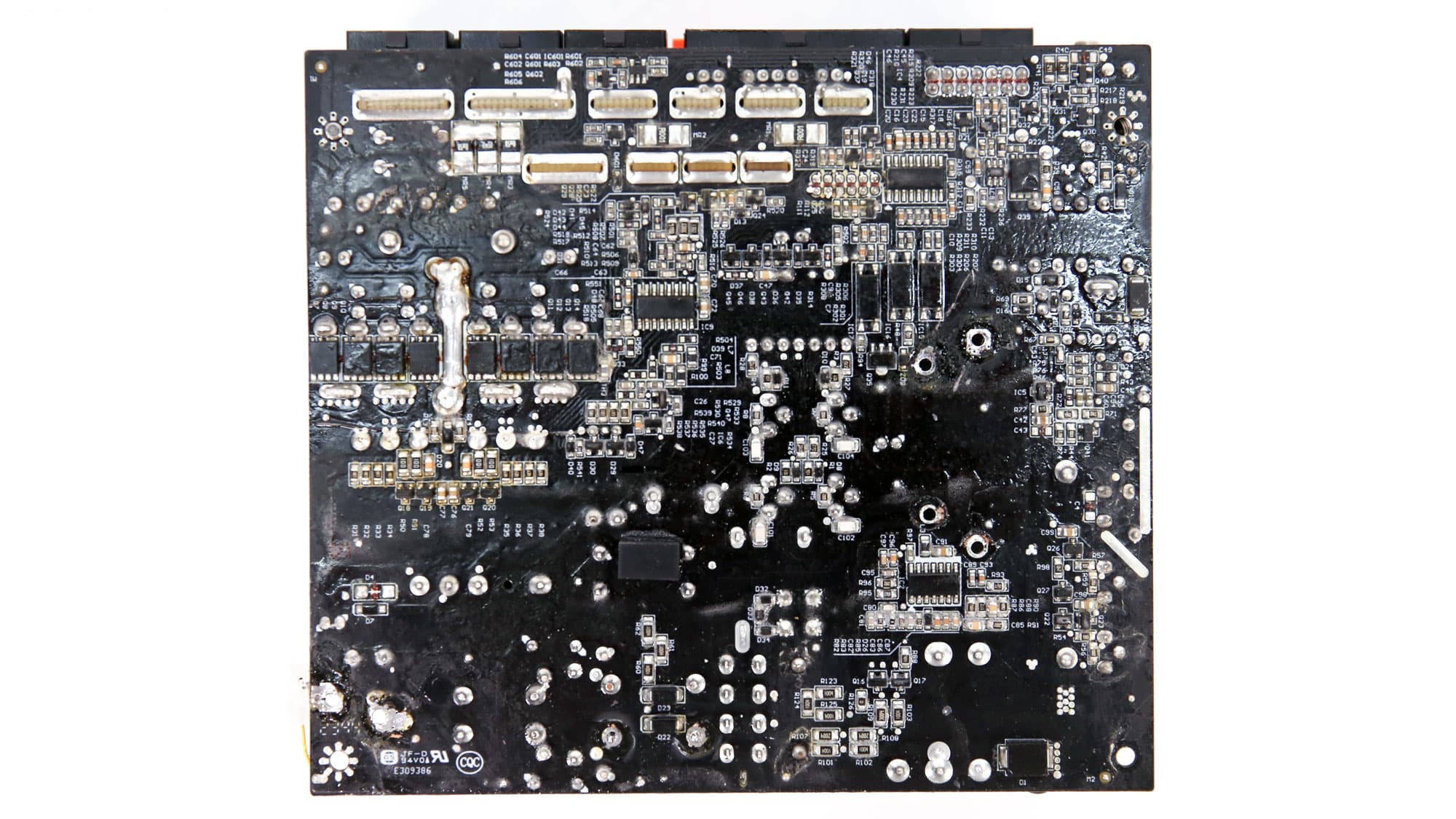
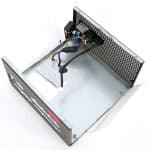
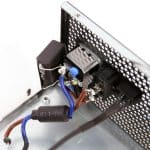
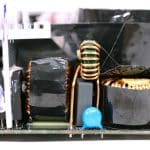
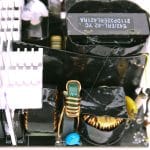
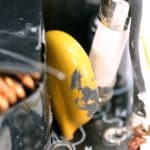
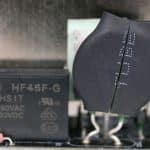
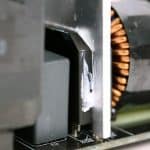
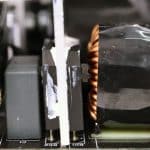
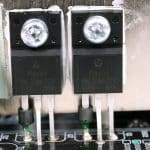
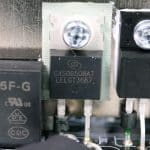
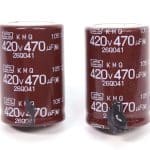
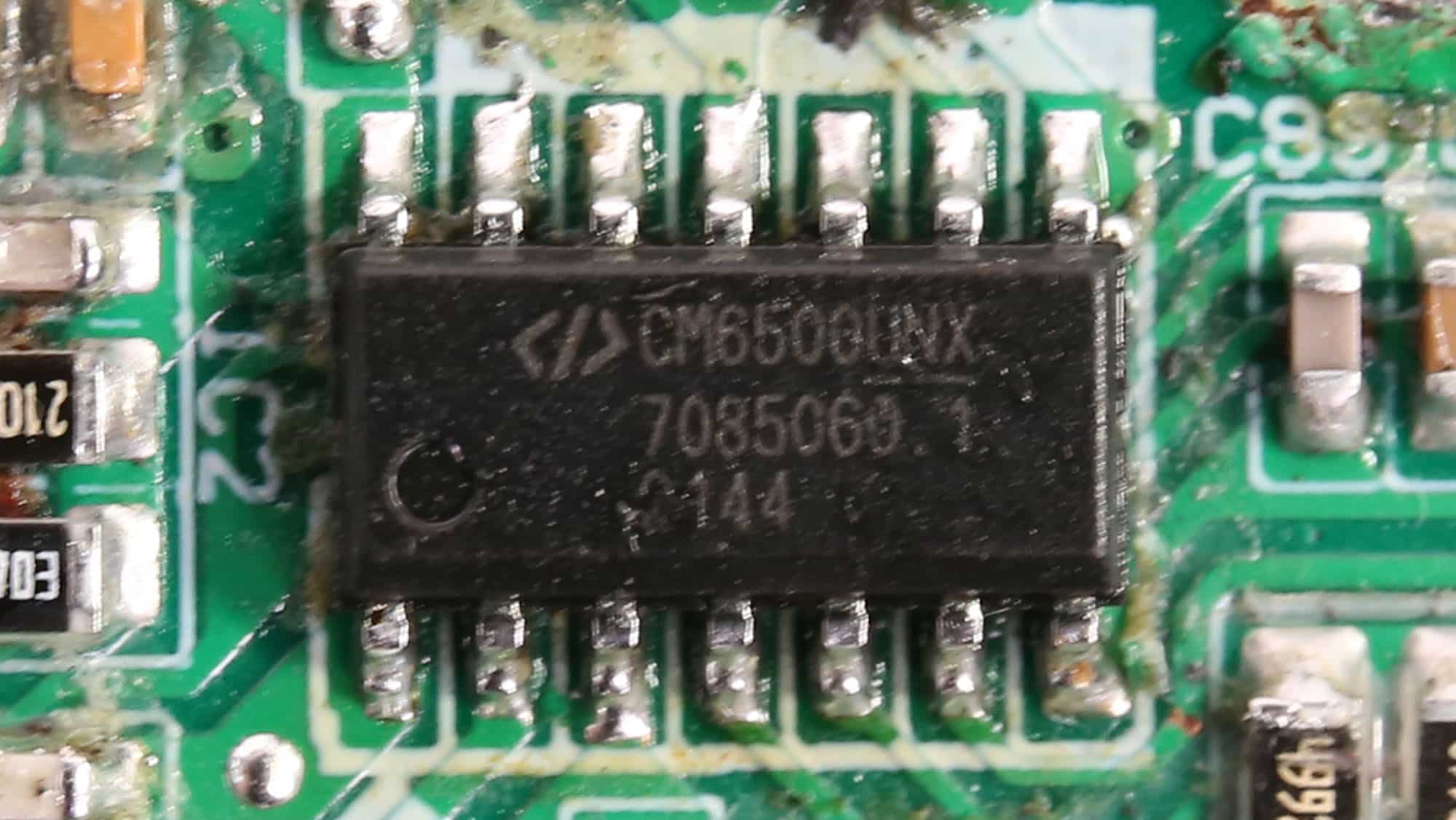
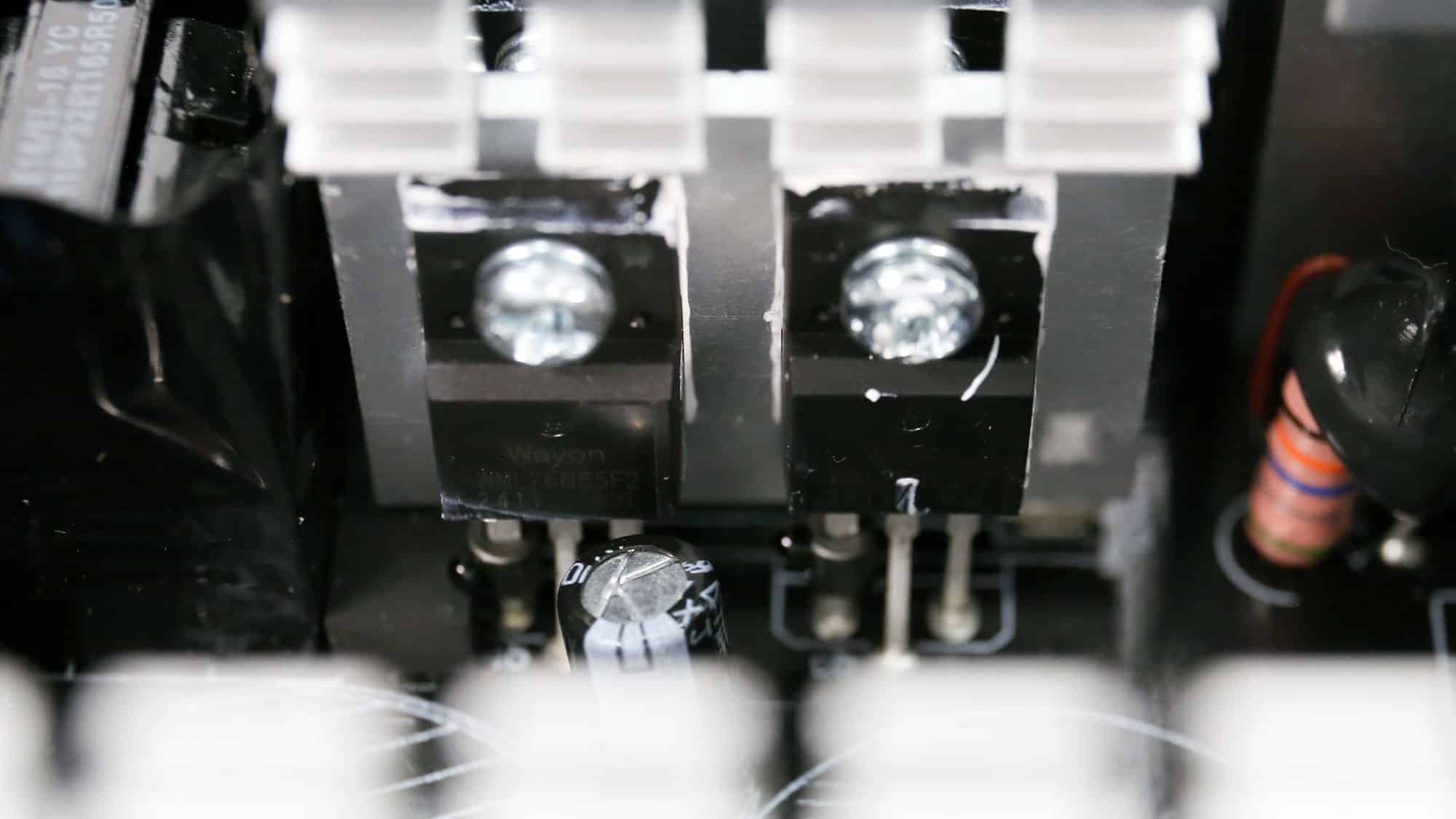
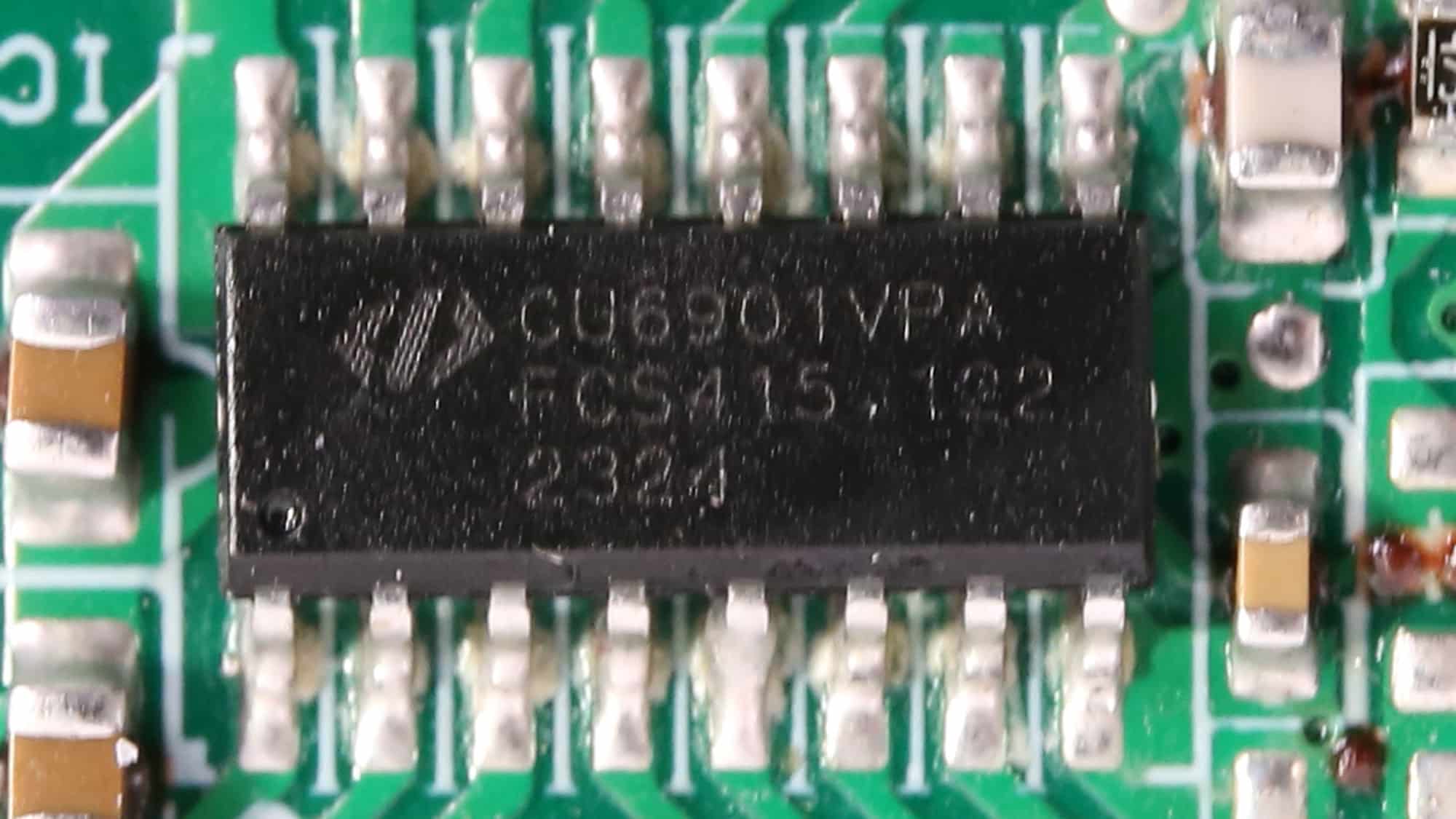
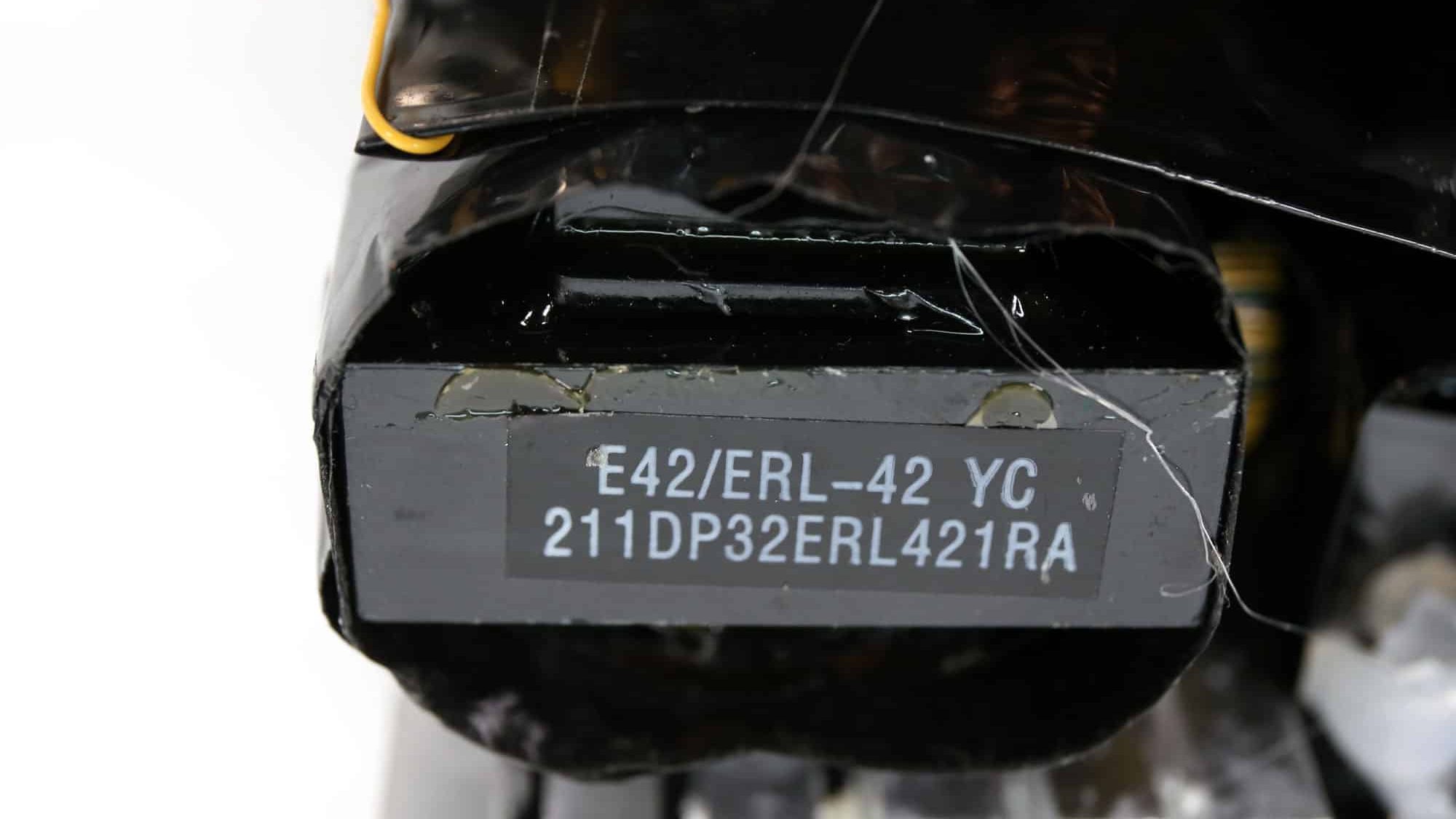
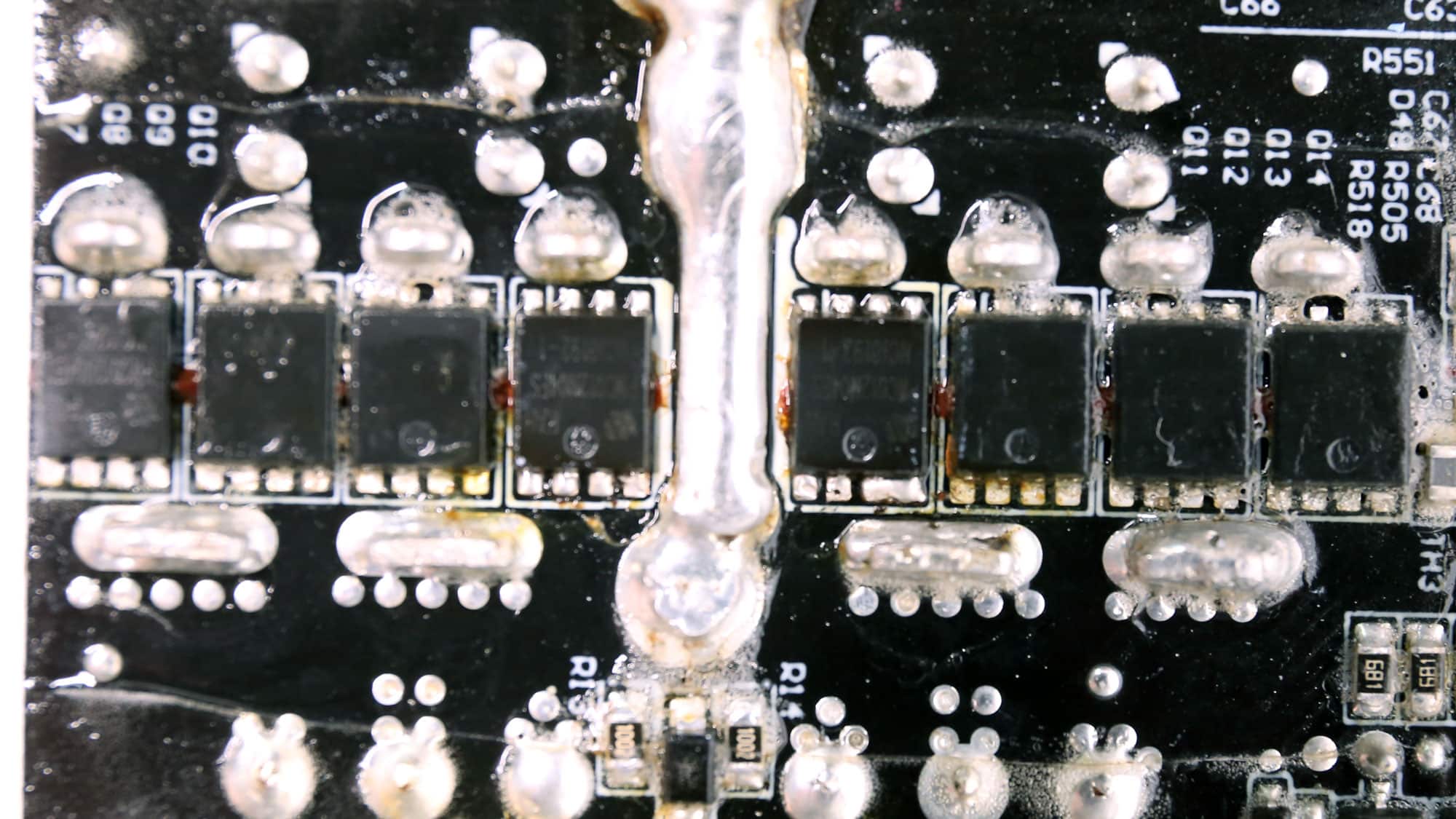
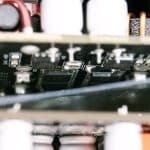
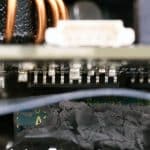
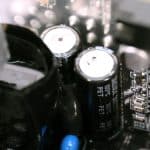
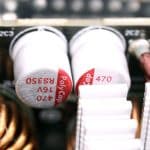
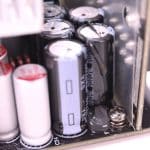
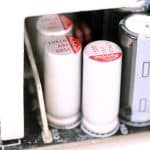
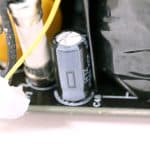
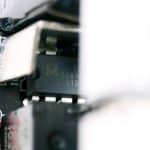
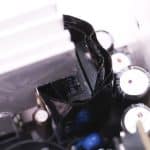
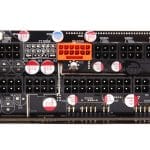
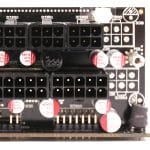
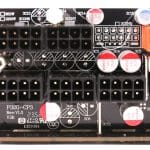
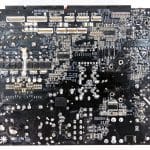
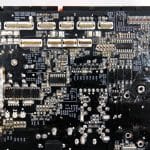
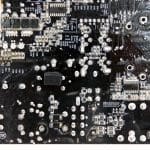
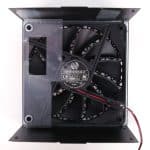
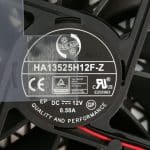
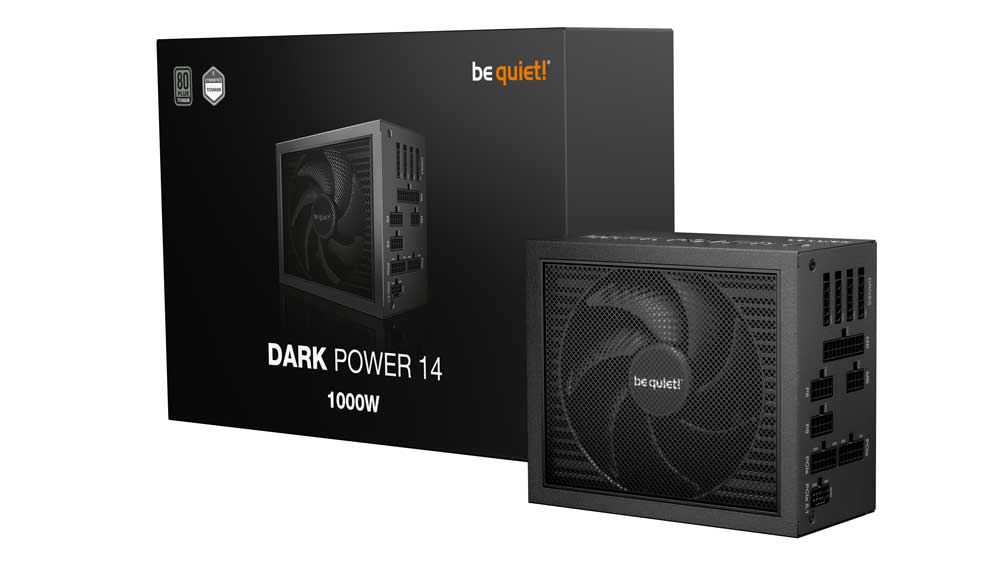
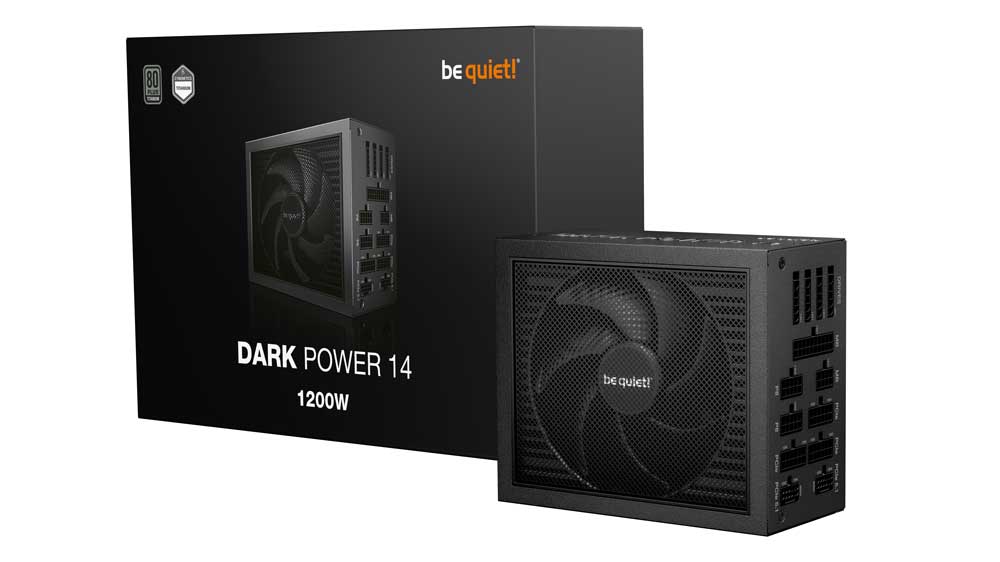
Average efficiency increased by only 0.3% compared to the YN series. Not impressive.